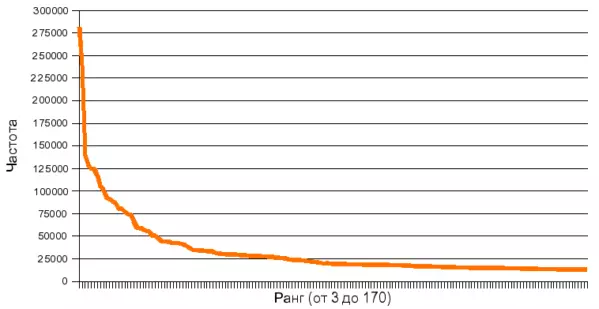How to learn 2000 English words in a month
How long can you suffer reading English articles with a translator without knowing English?! Probably everyone who just started learning a foreign language had such a problem. And is there a shorter way than spending years on courses, tutors and other lessons, if you want just learn to understand what you read? And he is!

Hello everyone, dear readers of Habr! I think that each of us is faced with the fact that now without knowledge of English it is very difficult to interact with the current reality, this is especially pronounced in the world of information technology, where all primary sources, documentation and the world community use English.
I would like to share with you my methodology for increasing vocabulary.
The essence of the technique
I will say right away that initially I did not have the task of communicating in English. The main goal was to understand the essence of the material presented in foreign English-language sources.
I often have to read articles and technical documentation in English, where a translator was never needed, and almost every word needed to be translated in order to understand the content.
This makes the process very difficult. One day it made me think that I know too few English words. And in order to learn how to read and understand texts normally, you need to increase your vocabulary. After searching the lists of the most popular words, I came to the following conclusion:
know 500 words – cover 60% of all texts;
know 1000 words – cover 80% of everyday needs;
more than 5000 words – cover 95%.
In addition, there Zipf’s lawaccording to which the 2nd common word occurs 2 times less often than the first, the 3rd – 3 times, the 100th – 100 times less often, etc.

That is, the question is not that you know N words, but what exactly these words are. The first 1000 can be learned in about 1-2 weeks if you set yourself such a goal.
And so, in a couple of weeks, you can, in principle, learn to understand 80% of English non-specialized texts.
But how to organize the learning process itself? You can simply write the necessary words on a piece of paper and learn from the list, but then it will be difficult to determine the pronunciation of a particular word, or you can use specialized services to increase your vocabulary. When using special programs, a convenient study scheme was chosen: since I personally spend most of my time in front of a computer monitor, it is most convenient to see, at a certain interval, notifications with the text of English words, translation and pronunciation. In the process of work, this does not distract from important matters – you just focus for 5-10 seconds on a notification with a new word, presenting associative images for better memorization. This is one of the most effective memory techniques. Everything is very simple: we take the word, we attach the image to the word. The method works well for visuals.

Together with the word and the image, it is desirable to present next to how this word is spelled. This technique is especially useful for abstract words. For example:
Look (look) – association with the word “bow” (for example, mentally draw an archer who pulled the string and looks at the target).
puddle – association with the word “fell” (imagine how someone fell into a puddle).
Sleeve (sleeve) – imagine the sleeve of a sweater (cloak, pullover, etc.) that sags from ripe plums stuffed there.
We all have our own associations, and even if they seem very strange to someone, but it works for you, let’s be strange 🙂
The next stage is the fixation of this image, word and the connection between them in the brain, i.e., repeat over and over again until it is postponed. Do not treat this as hard and tedious work. The learning process should be easy and playful. Mnemonics allows you to work with complex words that do not want to be remembered right away.
And it is also important to understand how these words function directly in speech, and apply them in practice.
After testing popular services, I identified the following shortcomings:
There is no opportunity to listen to the pronunciation;
It is inconvenient to edit the dictionary or upload new words;
There are extra or unnecessary features.
Inconvenient to use on a smartphone.
In this regard, it was decided to make our own application for learning words.
Bot to help
“If you want to do something well, do it yourself” (c).
This is how the telegram bot appeared – LearningTopWords_bot.

This bot helps you learn the most popular English words by displaying messages with the text of the word, translating, and attaching an audio file with pronunciation. An individual dictionary is maintained for each user.
With the help of this bot, with its daily use, I managed to learn a decent amount of words and replenish my vocabulary well. As a result, English literature became much easier to read, and technical articles succumbed without a dictionary.
When you start, you need to load the words that you need to learn. But here it is important to remember that it makes no sense to learn all the words in a row, but you should choose only those that are most often used. Also, a list of narrowly focused topics can be formed: development, sports, psychology, art, etc.
There are several ways to load words into a dictionary:
just copy the list of words and send to the bot;
save the words to a text file and send;
load words from the provided lists that are already in the bot: “Top 100 words”, “Top 500 words”, etc.

After loading the words, you need to set the time interval and you can start our word search. Words appear after the specified time interval in the form of telegram notifications.

Here, the bot attaches an audio file with pronunciation to each word, and also allows you to delete a word from the dictionary if we have learned it.

Outcome
This article does not list all the features of the bot. I hope my method will be useful to someone. And remember:
practice learning regularly;
share your progress with friends to keep you motivated;
encourage your progress to get used to the fact that learning is good;
develop memory in general, not only in English;
practice what you have learned to finally fix the words in context.
Bot link: LearningTopWords_bot




